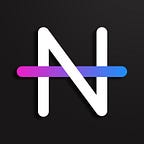The future of NavCoin governance.
When NavCoin initially launched in 2014, its core concepts were clear. One such core commitment is, and always will be, that decentralisation isn’t just a buzzword. With each protocol upgrade the innovative network has seen, they have stayed true to this promise, and with the imminent release of the NavCoin DAO upon us, the ecosystem looks to make another massive stride toward its goals.
Before we dive more into the details of the NavCoin DAO, let’s take a quick look at what exactly a ‘Decentralised Autonomous Organisation’ is. A DAO can be described as:
“…an organisation represented by rules encoded as a computer program that is transparent, controlled by shareholders and not influenced by a central government”
This concept has long been heralded as a potential holy grail of achievement, both within the cryptocurrency sphere and also the wider world of business and investment. With proper implementation, DAO’s can provide legitimate solutions to many real-world problems. In principle, there is no central authority, such as a development team or Foundation, holding the reins of control. DAO’s return the power of governance to the community who ultimately are most affected by these decisions.
To this effect, there is no one entity that can produce a unilateral decision. Users, miners and development teams all have equal weighting in their ability to exert their personal will without agreement from others. Ultimately, this also makes a DAO entirely incorruptible to human persuasion. It cannot be bought, bribed or banned by shady enterprises or enforcement agency. Even John Wick himself, could not excommunicate a perfectly programmed DAO!
While this idea, in theory, is seemingly flawless, in practice DAO’s have been the source of much controversy. Most famously of all such cases, 3.6 million Ether was stolen in 2016 by hackers exploiting a vulnerability in the Etheruem DAO. This resulted in a hard fork event for the network, something which everyone involved with NavCoin are obviously keen to avoid!
And so, what improvements does the NavCoin DAO make upon its predecessors, and, importantly, why are these tools so vital going forward?
Essentially, there are three key prongs to the NavCoin DAO trident. Let’s break them down.
Flexibility
With the world entering a period of unprecedented uncertainty, now, more than ever, questions regarding the parameters controlling the financial markets are coming to the forefront. In the convoluted spectrum of fiat finance, these answers are usually somewhat elusive, to say the least.
Conversely to this, in cryptocurrency, the principles of “code as law” are deep- rooted, bringing with it a sense of transparency of certainty. In the wake of the 2008 financial crisis, Bitcoin was born, and with it, the novel notion that currency supply needn’t be an infinitely inflationary model.
Rigidity brings its own constraints however, as many crypto-communities have sadly found out the hard way. Without flexible parameters, vulnerabilities or outdated concepts can bring entire blockchains to their knees. For this very reason, unlike other DAO projects, NavCoin DAO allows for parameter updates. In fact, it allows any community member, regardless of coding ability, to bring a proposal forward, on any parameter whatsoever. The community are able to fund, guide and alter their networks rules without the involvement of developers.
Take, for example, the “money printer go brr” meme we’re sadly all too familiar with. While NavCoin, much like Bitcoin, has scheduled emission (2.5 NAV per block), thanks to the NavCoin DAO, users can bring about a consensus to adjust block emission rates.
In times of uncertainty this is a powerful feature, and, of course, is not limited to block emission rates. Any parameter whatsoever affecting the blockchain can be adjusted via this mechanism! The process in place guarantees that any NavCoin user, regardless of technical know-how, can have their voice heard and bring forward proposals to ultimately be decided upon by the community.
Immunity
While consensus mechanisms are, generally speaking, the best tool for governing such decisions, they too, have been known to cause issues. Lower voter numbers on smaller topics can, and have, resulted in bad actors receiving payment for work never intended to be completed. To ensure that illegitimate proposals do not receive funding via loopholes in voting procedures, NavCoin DAO works hand-in- hand with a multi-consensus community funding system. This unique way of working means that, at no point, can bad-actors receive funding for shoddy or incomplete work, protecting the community.
Consultation
While of course, protecting the interests of the network are vital, it is important too, to empower developers wishing to build using NavCoin. It is for this very reason, that the DAO brings with it a unique consultation system. With this system, developers can gauge the mood of the community before committing their time and resources to developing a full-blown proposal. This feature could also be used in a number of other novel ways. Say, creating a NavCoin community poll on their feelings toward privacy features.
And speaking of privacy features, in addition to work being done upon NavCoin DAO, the next core upgrade will implement an entirely new privacy protocol. With much controversy surrounding the use of privacy features in the current climate of contact tracing, it will be interesting to explore the implications of this as governments look to phase out the use of cash and paper money in the wake of an international pandemic.
For now, however, as traditionally rational markets show signs of instability, it is no surprise that the spotlight shines upon cryptocurrency once again for viable solutions. With the release of NavCoin DAO, NavCoin equips itself with the vital tools necessary in recognising and enacting the will of its users. More so than this, it does so without constraining them through predefined parameters, and at the same time, protects the network from censorship and malice.
